Skirts Ahoy!

Brief Synopsis
Cast & Crew
Sidney Lanfield
Esther Williams
Joan Evans
Vivian Blaine
Barry Sullivan
Keefe Brasselle
Film Details
Technical Specs

Synopsis
Sweet, small-town girl Mary Kate Yarbrough is left at the altar by her fiancé, Dick Hallson, just as sophisticated Long Island heiress Whitney Young runs away from her bridegroom as she walks down the aisle. In New York City, bridal gown saleswoman Una Yancy dreams of someday buying her own dress, but her long absent fiancé, Archie O'Conovan, only sends her postcards. When a military parade passes by, Una see Archie among the sailors and decides that the only way she can be with him is to join the Navy herself. Soon, all three women report for induction at the Great Lakes Naval Training Station, near Chicago, and become roommates. Although Whit is late for her induction, she impresses Lt. Comdr. Staunton with her desire not to pull strings and to do something useful with her life. Mary Kate, meanwhile, feels terribly homesick and out of place. By the end of their initial six weeks of training, Whit, who excels at all of her tasks, becomes Company Three's recruit commander, but Mary Kate cannot get over her homesickness. One night, Whit who has learned from base plumber "Pop" that someone can get out of the WAVES if her homesickness makes her ill, tells Staunton of Mary Kate's feelings. Whit and Una set up a meeting for Mary Kate before the company board, but just before her testimony, Dick comes looking for her. Dave gives Mary Kate flowers and apologizes for his behavior, but when he talks of how "very fond" they are of each other, the passive Mary Kate realizes that he underestimates her and angrily decides to prove herself in the Navy. Soon the women are allowed to take liberty in Chicago. Although they separate, the three women later run into one another at a lady's tearoom, chagrined at their lack of male companionship. Hearing about a good place to meet men, Una and Whit leave Mary Kate, who prefers not to join them, and go to a bar. There Una and Whit meet an attractive man in civilian clothes, unaware that he is Lt. Comdr. Paul Elcott, the new base physician. After Whit secretly asks Una to leave, Paul plays along with Whit's bold flirting and accepts her invitation to dinner. Not wanting to use her real name, Whit says her name is Mary Smith, while Paul says that his is John Smith. During a romantic dinner at a nightclub, young WACS who are at a nearby table whistle at Paul, then send a note over, suggesting that he join them. Annoyed, Whit goes to their table and a fight ensues. The next day, Whit is called before the company board and has difficulty explaining her situation when an Army MP claims that Whit's attack was completely unprovoked. The board is about to discipline her when Paul arrives, in full military uniform, and testifies that their dinner was an innocent discussion of military life and that the WACS started the trouble. After being exonerated, a surprised Whit happily goes into Paul's office, but is surprised when he rebuffs her overtures and tells her that officers and enlisted personnel cannot fraternize. He lectures her about conducting herself in a way that will not disgrace other WAVES, after which she leaves, hurt. Just before their training is completed, the women attend a USO show and Mary Kate is shocked to see that Dick is one of the Navy performers. He later professes his love for her and, despite her protests, she realizes that she is in love, too. As Una dreams of an assignment in France, where Archie has written he will be stationed, a lonely Whit, who has again been rebuffed by Paul, walks home alone. The next day, Whit's uncle, Thatcher Kinston, visits and, seeing her unhappiness, says that she should fight for what she wants. Whit then decides to go to Paul's office and ask to see him about a "personal problem," but Paul refuses to see her, saying that the base psychiatrist handles personal problems. Staunton, who is in Paul's office at the time, guesses that Paul returns Whit's affections, but cannot make him realize his true feelings. That night, Whit decides to give Paul one more chance and takes the seat next to him at the base movie theater. Much to the annoyance of the other moviegoers, Paul and Whit start to argue over who should be the "hunter" in a relationship and Whit leaves in anger. At graduation day, Whit, Mary Kate and Una all receive orders to report for Washington for three months prior to overseas assignment. Mary Kate promises Dick to help him become a good sailor, but Una is frustrated to run into Archie, who will now be stationed at Great Lakes. Whit makes one more attempt to see Paul in his office, and by the time they say goodbye at the train station, he admits his love and promises to get a transfer to Washington as soon as possible. Finally, Dick, Archie and Paul wave goodbye as the women's train leaves the station.

Director
Sidney Lanfield
Cast

Esther Williams

Joan Evans

Vivian Blaine

Barry Sullivan

Keefe Brasselle
Billy Eckstine

Dean Miller

Margalo Gillmore
The De Marco Sisters

Jeff Donnell
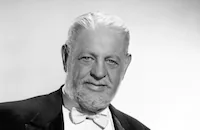
Thurston Hall
Russell "bubba" Tongay
Kathy Tongay

Roy Roberts
Emmett Lynn
Hayden Rorke

Debbie Reynolds

Bobby Van

Keenan Wynn
Skip Martin And His Orchestra
The Marimba Merrymakers

Paul Harvey
Ruth Lee

Whit Bissell
Rudy Lee
Madge Blake
Bette Arlen
Jody Hutchinson
Lillian Culver
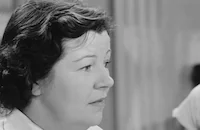
Margaret Bert
Wheaton Chambers
Estelle Eterre
Gloria Noble

Mae Clarke

Kathleen Freeman
Phyllis Kennedy
Tomi Thurston
Mina Kolb
Doctor Phillips
Beverly Wills
Wendy Waldron
Helen Winston
Sarah Spencer

Elaine Riley
Miss Dockerty

Byron Foulger
Diane Cassidy
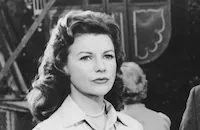
Nan Leslie
Dorothy Abbott
Henny Backus
Jack Gargan
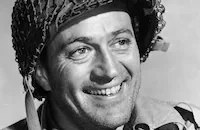
Don Haggerty
Bob Simpson
Millie Bruce
Frances Robinson
Artie Young
Louise Franklin
Suzette Harbin
Louise Collette
Mildred Boyd
Tomasina Ayers
Florence Collins
Gwendolyn Heyliager
Mauri Lynn

Juanita Moore
Bernice Mcglover
Frances Nealy
Alpha Seals
Lena Torrence
Madi Comfort
Tracy Young
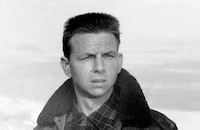
Alvy Moore
Steve Wayne
Roger Mcgee
Robert Board
Tommy Bernard
Margaret Kint
Kay Scott
Kathleen Qualen
John Logan
Jimmy Thomas
Harry Mackin
Fred Datig Jr.
William Haade
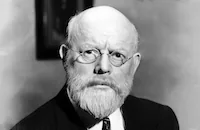
Howard Mitchell
Mary Moran
Wilson Wood
Michael Dugan
Mitzi Uehlein
Fred Hoose
Kathleen O'malley
Beryl Mccutcheon
Miriam Hendry
Muffin Mayo
Gene Summers
Meredith Leeds
Nolie Miller
Erin Selwyn
Sally Seaver
Crew
Jeff Alexander
Peter Ballbusch
Ralph Blane
Lew Brown
Nick Castle
Daniel B. Cathcart
Joan Elmes
Cedric Gibbons
James Gooch
Sydney Guilaroff
Henri Jaffa
Standish Lambert
Isobel Lennart
Jay Marchant
William Mellor
Warren Newcombe
Joe Pasternak
Helen Rose
Pete Rugolo
Douglas Shearer
Sid Sidman
Lt. Comdr. Eleanor Sowers
Alfred E. Spencer
Georgie Stoll
William Tuttle
Albert Von Tilzer
Cotton Warburton
Harry Warren
Edwin B. Willis

Videos
Movie Clip



Trailer
Film Details
Technical Specs

Articles
Skirts Ahoy!
With the U.S.'s involvement in the Korean War, all three military branches were desperate to acquire female enlistees to take the place of men who had been transferred from administrative jobs to combat duty. As a result, they encouraged MGM to make this story of three women who enlist in the Navy for a variety of personal reasons only to find love, glamour and a new sense of self-respect. Williams was a natural choice to star in any film closely linked with the water. The former Olympic hopeful (the year she made the U.S. team, the games were cancelled because of the outbreak of World War II) had headlined a series of musicals highlighting her swimming and diving prowess while not noticeably stretching her limited acting abilities. Even more important, there had never been a hint of subversion in her past.
The script was assigned to writer Isobel Lennart, who had recently named names before the House Un-American Activities Committee, a move she would almost immediately regret. At the time, however, she was convinced it was the only way to avoid the blacklist and keep her career. She would later say that she carefully named only those she knew had been named before. Nevertheless, some of the friends she had made during her early involvement in union causes and brief membership in the Communist Party refused to speak to her afterwards.
Williams only had one problem with the script: It didn't have enough swimming sequences. At her request, a scene in which she performed calisthenics on an athletic field was moved to a swimming pool where she helps her friends learn to swim. That created another problem, however, when she got a look at Naval regulation swimming suits. The drab suits were far from flattering dry and looked worse wet. In particular, they offered no support for an adult woman, flattening even the most impressive breasts. Williams knew Secretary of the Navy Dan Kimball and arranged to meet him during a publicity junket to Washington. In his office she modeled the official suit, then tried on a suit she had had specially built by Cole of California, the company that made and distributed the Esther Williams swimsuit line. He quickly agreed to make the new model the official swimsuit of the U.S. Navy. Then she got him to place an order for 50,000 of them.
Williams's on-screen partners were Joan Evans, a young actress soon to give up the screen for family life, and Vivian Blaine, who had recently scored a hit on Broadway as Adelaide in Guys and Dolls. That stage success, after years of lesser Hollywood films, may have inspired director Sidney Lanfield's dislike of her. He browbeat her mercilessly on the set and almost destroyed her confidence. After trying to bolster Blaine's spirits, Williams took a more direct course. She confronted Lanfield and threatened to have him removed from the picture if he didn't take it easy on Blaine. Having been bullied herself by directors when she was just starting out in films, Williams wasn't about to tolerate such behavior now that she was a star.
Skirts Ahoy! emerged as a moderately successful aqua musical, greatly overshadowed by Williams' next picture, Million Dollar Mermaid (1952). It was helped greatly by a spirited score from Harry Warren, who had previously written "Lullaby of Broadway" and "You'll Never Know," and Ralph Blane, who had written the lyrics for Meet Me in St. Louis (1944). As with many of Williams's films, the musical chores were shared with a series of guest stars. In this case, Debbie Reynolds and Bobby Van took time from other films to do a number, and jazz great Billy Eckstine made his only appearance in a Hollywood film.
Producer: Joe Pasternak
Director: Sidney Lanfield
Screenplay: Isobel Lennart
Cinematography: William Mellor
Art Direction: Cedric Gibbons, Daniel B. Cathcart
Music: Georgie Stoll
Cast: Esther Williams (Whitney Young), Joan Evans (Mary Kate Yarbrough), Vivian Blaine (Una Yancy), Barry Sullivan (Lt. Comdr. Paul Elcott), Keefe Brasselle (Dick Hallson), Billy Eckstine (Himself), Margalo Gillmore (Lt. Comdr. Staunton), The DeMarco Sisters (The Williams Sisters), Jeff Donnell (Lt. Giff), Thurston Hall (Thatcher Kinston), Roy Roberts (Capt. Graymont), Hayden Rorke (Doctor), Debbie Reynolds (Herself), Bobby Van (Himself), Whit Bissell (Mr. Yarbrough), Madge Blake (Mrs. Vance), Mae Clarke (Miss LaValle), Byron Foulger (Tearoom Manager), Juanita Moore (Black Cadet), Henny Backus (Nurse).
C-110m. Closed Captioning.
by Frank Miller

Skirts Ahoy!
Quotes
Trivia
Notes
According to Hollywood Reporter news items, Vic Damone, Sally Forrest and Dorothy Malone were all cast in Skirts Ahoy, but none appeared in the released film. News items and a Hollywood Reporter "Rambling Reporter" column noted that Vera-Ellen and Ricardo Montalban had filmed a dance sequence for the picture, but it was cut from the released film. Other Hollywood Reporter news items provide the following information: actors Alice Markham, Shirley Christensen, Ann Avery, Joyce Kimbrell, Darlene Coureil, Bette Arlen, Donna Damron, Donna Lee Dickson and Curtis Cooksen were also cast, but their appearance in the released film has not been confirmed; actress Henny Backus, wife of comic actor Jim Backus, made her debut in the film, which also marked the debut of Dean Miller (1924-2004), the singing debut of actor Keith Brasselle and the motion picture debut of the singing group The De Marco Sisters. One of the sisters, Arlene, was married to Brasselle until the early 1970s.
Actress Joan Evans was borrowed from Samuel Goldwyn for the production, and although a Hollywood Reporter news item indicated that she would be making her singing debut, M-G-M music files at the USC Cinema-Television Library reveal that Evans' voice was dubbed. Additional information in the music files reveal that another song, "Hilda Matilda," was recorded, but it was not included in the released film. Portions of the film were shot on location at the Great Lakes Naval Training Station in Chicago. The picture contained several swimming sequences featuring Esther Williams, including an underwater ballet with young children Russell "Bubba" Tongay and Kathy Tongay. M-G-M contract players Debbie Reynolds, Bobby Van and Keenan Wynn appeared in the film's USO sequence but were not given screen credit or mentioned in most reviews. Williams and Barry Sullivan reprised their roles for a Lux Radio Theatre broadcast on October 26, 1953.















